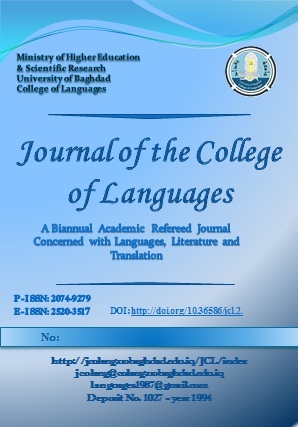LA CONDICIONALIDAD EN ÁRABE Estudio lingüístico y traductológico CONDITION IN ARABIC: Linguistic study and translation
Keywords:
sintaxis árabe, marcadores discursivos, hipótesis, elipsis, condionalidad, árabe, Arabic syntax, discourse markers, hypothesis, ellipsis, condition, Arabic.Abstract
La condicionalidad en árabe, supongo como en otras lenguas, constituye una noción amplia que puede expresarse mediante diferentes construcciones sintácticas. La mayor parte de los especialistas coinciden en señalar que las estructuras condicionales son, probablemente, la clase más compleja de expresión compuesta en árabe. Se utilizan para expresar una condición de la que depende la realización de lo expuesto en la oración principal. Las estructuras condicionales son una de las principales vías lingüísticas de las que dispone el individuo para expresar su capacidad de imaginar situaciones diferentes a las reales; de crear mundos posibles; de soñar con situaciones pasadas que podrían haber sido diferentes; de ocultar lo factual tras la apariencia de lo contingente.
En árabe la prótasis es generalmente un sintagma verbal[1], y lo mismo ocurre con frecuencia en la apódosis, con el verbo en perfectivo o en yusivo aunque sin que ello conlleve un sentido temporal preciso.
[1] ‘Abbās Ḥasan, 1974, an-Naḥū al-Wāfi, dār al-Ma‘ārif al-Miṣriyya, El Cairo, 3ª edición, tomo IV, pág.471.
Abstract
Conditionality in Arabic is supposed, as in other languages, a broad concept that can be expressed by different syntactic constructions. Most experts agree that the conditional structures are probably the most complex kind of expressions in Arabic. They are used to express a condition on which the realization of what transpired in the main clause depends. Conditional structures are one of the main avenues of language available to the individual to express their ability to imagine different situations to real; create possible worlds; dreaming of past situations that could have been different; hide what factual after the appearance of the contingent.
In Arabic the protasis is usually a verb phrase, and the same happens frequently in the apodosis, with the verb in perfective or jussive although without incurring a precise temporal sense.
The conditional sentence in Arabic is called (aj-jumlah ash-shartiya الجملة الشرطية) which consists of two juxtaposed prayers, the first in Spanish, has different names; protasis, background, hypothesis, simply called in Arabic (jumlatu ash-shart جملة الشرط, the second is apodosis, therefore, conditioned or consequential, and Arabic is called (تawābu ash-shart - جواب الشرط) although it may be preceded in some cases by linking elements as ف, سوف, ل, etc ... - introduced by a conditional particle أداة شرط.
If + protasis (antecedent) + apodosis (consequent)
As to the order of the clauses, in Arabic, what is that characteristic protasis precedes the apodosis. This prototypical anteposistion of the subordinate clause is defended and required school basraui (the Basra), and is the usual structure: + connector + protasis apodosis; if you shut up, I'll buy you a gift, ان تسكت فسأشتري لك هدية, whereas if the order is reversed, the apodosis this ommited. On the other hand, another school of Kufa and some Arab grammarians accept the preemption of apodosis.
We try to focus light on the translation of conditional markers that on many occasions, from a grammatical perspective, not regarded as conditional. However, these structures express conditionality in Arabic.







